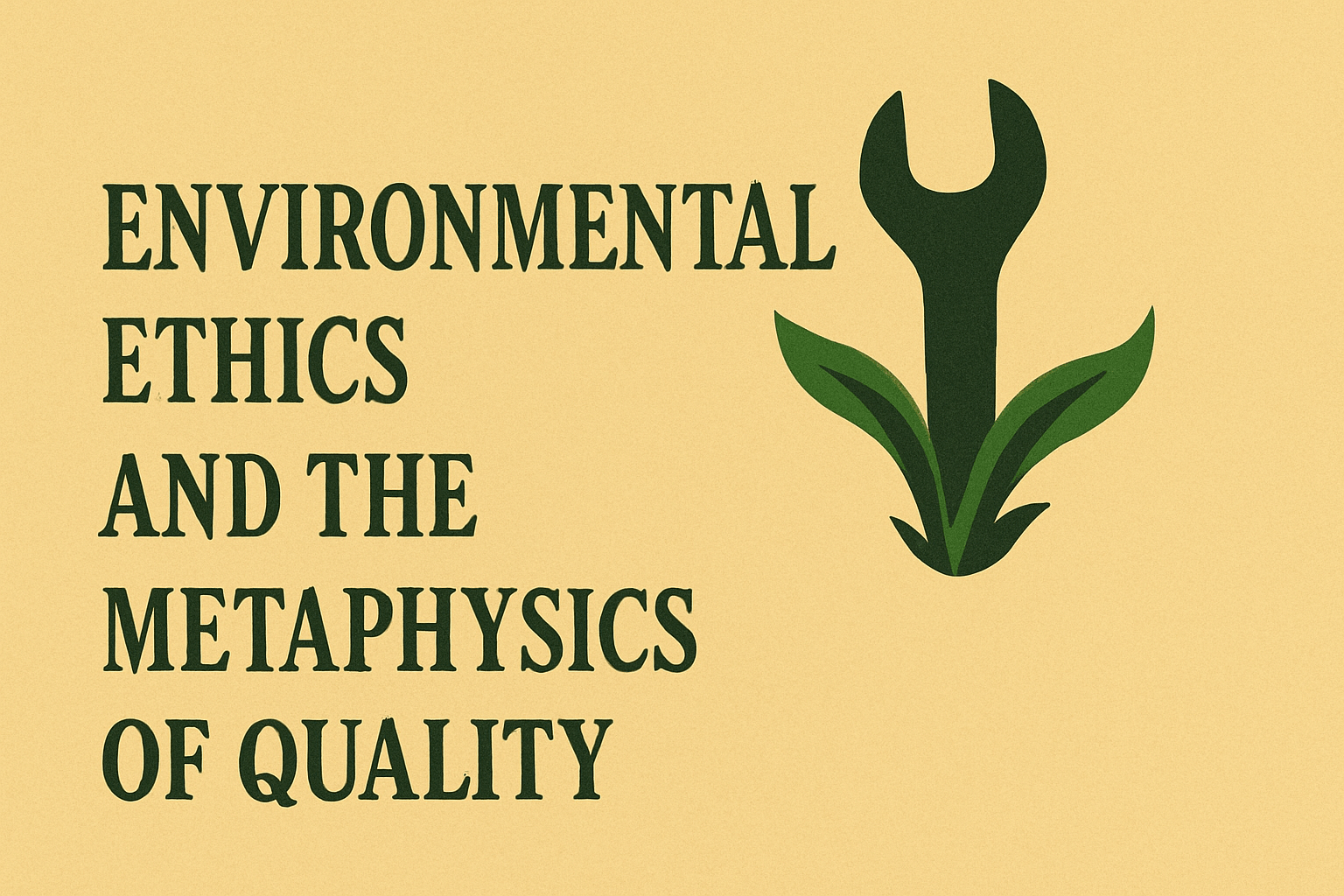Analyzing how Pirsig’s philosophy can contribute to environmental ethics, promoting sustainable living and respect for the natural world through the pursuit of quality.
Robert M. Pirsig’s Metaphysics of Quality (MOQ) provides a profound philosophical framework that transcends traditional dichotomies and offers a unique perspective on value and reality. While Pirsig’s work primarily explores the nature of quality in human experience, its principles can be extended to environmental ethics. This article examines how Pirsig’s philosophy can contribute to environmental ethics, promoting sustainable living and respect for the natural world through the pursuit of quality.
The Intersection of Quality and Environmental Ethics
Environmental ethics involves the moral relationship between humans and the environment, emphasizing the need for sustainable practices and respect for nature. Pirsig’s Metaphysics of Quality, which posits that quality is the primary reality, provides a compelling basis for rethinking our interactions with the environment. By prioritizing quality, we can foster a more sustainable and respectful relationship with the natural world.
Quality in Environmental Practices
- Sustainable Living: The pursuit of quality inherently supports sustainable living. Quality in this context means valuing long-term environmental health over short-term gains. Sustainable practices, such as reducing waste, conserving resources, and minimizing pollution, align with the principles of quality by ensuring the well-being of both current and future generations.
- Mindful Consumption: Quality-driven consumption emphasizes mindful and responsible use of resources. This involves choosing products that are durable, ethically produced, and environmentally friendly. By prioritizing quality over quantity, individuals can reduce their ecological footprint and support sustainable production methods.
- Holistic Environmental Management: Pirsig’s holistic approach to quality can be applied to environmental management, where the interconnectedness of ecosystems is recognized and respected. This means adopting practices that consider the impact on entire ecosystems rather than focusing on isolated elements. Holistic management promotes biodiversity, ecological balance, and the health of the planet.
Dynamic and Static Quality in Environmental Ethics
Pirsig’s distinction between dynamic and static quality provides a valuable lens for understanding environmental ethics.
- Dynamic Quality and Innovation: Dynamic quality represents the force of innovation and change. In environmental ethics, this translates to developing new technologies and practices that enhance sustainability. Innovations such as renewable energy sources, biodegradable materials, and eco-friendly agriculture are examples of dynamic quality driving positive environmental change.
- Static Quality and Conservation: Static quality involves preserving established structures and traditions that provide stability. In environmental ethics, this is reflected in conservation efforts aimed at protecting natural habitats, endangered species, and traditional ecological knowledge. Conservation ensures that vital aspects of the environment are maintained for future generations.
- Balancing Innovation and Conservation: The balance between dynamic and static quality is crucial in environmental ethics. While innovation is necessary for addressing environmental challenges, conservation provides the stability needed to protect existing ecosystems. Effective environmental strategies integrate both aspects, fostering a sustainable and resilient relationship with nature.
Respect for the Natural World
- Intrinsic Value of Nature: Pirsig’s philosophy emphasizes the intrinsic value of quality, which can be extended to the natural world. Recognizing the inherent worth of nature, beyond its utility to humans, fosters a deeper respect for the environment. This perspective encourages actions that protect and preserve the natural world for its own sake.
- Interconnectedness: The Metaphysics of Quality highlights the interconnectedness of all things, a concept that resonates with ecological principles. Understanding the interconnectedness of ecosystems and human activities promotes a sense of responsibility and stewardship for the environment. This awareness encourages practices that support ecological balance and health.
- Ethical Stewardship: Quality in environmental ethics involves ethical stewardship, where humans act as caretakers of the earth. This means making decisions that prioritize environmental well-being, advocating for policies that protect natural resources, and engaging in community efforts to promote sustainability.
Case Studies of Quality in Environmental Ethics
- The Transition Town Movement: The Transition Town movement exemplifies the application of quality principles in community-driven environmental action. By fostering local resilience through sustainable practices, renewable energy projects, and community gardens, Transition Towns prioritize both dynamic innovation and static conservation.
- Permaculture: Permaculture is a holistic approach to agriculture that integrates dynamic and static quality. It promotes innovative design principles that mimic natural ecosystems (dynamic quality) while preserving traditional farming practices and biodiversity (static quality). Permaculture systems are sustainable, productive, and environmentally friendly.
- Corporate Environmental Responsibility: Companies like Patagonia demonstrate how businesses can integrate quality into their environmental practices. By using sustainable materials, reducing carbon footprints, and supporting environmental activism, Patagonia exemplifies a commitment to quality that extends to the natural world.
Conclusion
Robert M. Pirsig’s Metaphysics of Quality offers a valuable framework for enhancing environmental ethics. By prioritizing quality in our interactions with the environment, we can promote sustainable living, mindful consumption, and holistic environmental management. The balance between dynamic and static quality provides a nuanced approach to innovation and conservation, fostering a respectful and sustainable relationship with the natural world. As we navigate the complex challenges of environmental sustainability, embracing the principles of quality can guide us toward a more harmonious and ethical coexistence with nature.
